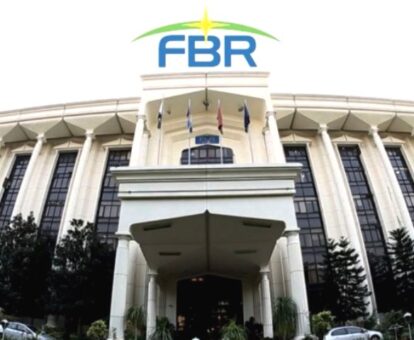Section 35 of Income Tax Ordinance, 2001 has explained tax treatment on disposal of stock in trade. The Federal Board of Revenue (FBR) issued the Income Tax Ordinance, 2001 updated up to June 30, 2021.
The Ordinance incorporated amendments brought through Finance Act, 2021.
Following is the text of Section 35 of Income Tax Ordinance, 2001:
35. Stock-in-trade.— (1) For the purposes of determining a person’s income chargeable to tax under the head “Income from Business” for a tax year, the cost of stock-in-trade disposed of by the person in the year shall be computed in accordance with the following formula, namely:—
(A + B) – C
where —
A is the opening value of the person’s stock-in-trade for the year;
B is cost of stock-in-trade acquired by the person in the year; and
C is the closing value of stock-in-trade for the year.
(2) The opening value of stock-in-trade of a person for a tax year shall be —
(a) the closing value of the person’s stock-in-trade at the end of the previous year; or
(b) where the person commenced to carry on business in the year, the fair market value of any stock-in-trade acquired by the person prior to the commencement of the business.
(3) The fair market value of stock-in-trade referred to in clause (b) of sub-section (2) shall be determined at the time the stock-in-trade is ventured in the business.
(4) The closing value of a person’s stock-in-trade for a tax year shall be the lower of cost or net realizable value of the person’s stock-in-trade on hand at the end of the year.
(5) A person accounting for income chargeable to tax under the head “Income from Business” on a cash basis may compute the person’s cost of stock-in-trade on the prime-cost method or absorption-cost method, and a person accounting for such income on an accrual basis shall compute the person’s cost of stock-in-trade on the absorption-cost method.
(6) Where particular items of stock-in-trade are not readily identifiable, a person may account for that stock on the first-in-first-out method or the average-cost method but, once chosen, a stock valuation method may be changed only with the written permission of the Commissioner and in accordance with any conditions that the Commissioner may impose.
(7) In this section, —
“absorption-cost method” means the generally accepted accounting principle under which the cost of an item of stock-in-trade is the sum of direct material costs, direct labour costs, and factory overhead costs;
“average-cost method” means the generally accepted accounting principle under which the valuation of stock-in-trade is based on a weighted average cost of units on hand;
“direct labour costs” means labour costs directly related to the manufacture or production of stock-in-trade;
“direct material costs” means the cost of materials that become an integral part of the stock-in-trade manufactured or produced, or which are consumed in the manufacturing or production process;
“factory overhead costs” means the total costs of manufacturing or producing stock-in-trade, other than direct labour and direct material costs;
“first-in-first-out method” means the generally accepted accounting principle under which the valuation of stock-in-trade is based on the assumption that stock is sold in the order of its acquisition;
“prime-cost method” means the generally accepted accounting principle under which the cost of stock-in-trade is the sum of direct material costs, direct labour costs, and variable factory overhead costs;
“stock-in-trade” means anything produced, manufactured, purchased, or otherwise acquired for manufacture, sale or exchange, and any materials or supplies to be consumed in the production or manufacturing process, but does not include stocks or shares; and
“variable factory overhead costs” means those factory overhead costs which vary directly with changes in volume of stock-in-trade manufactured or produced.
(Disclaimer: The text of above section is only for information. Team PkRevenue.com makes all efforts to provide the correct version of the text. However, the team PkRevenue.com is not responsible for any error or omission.)
